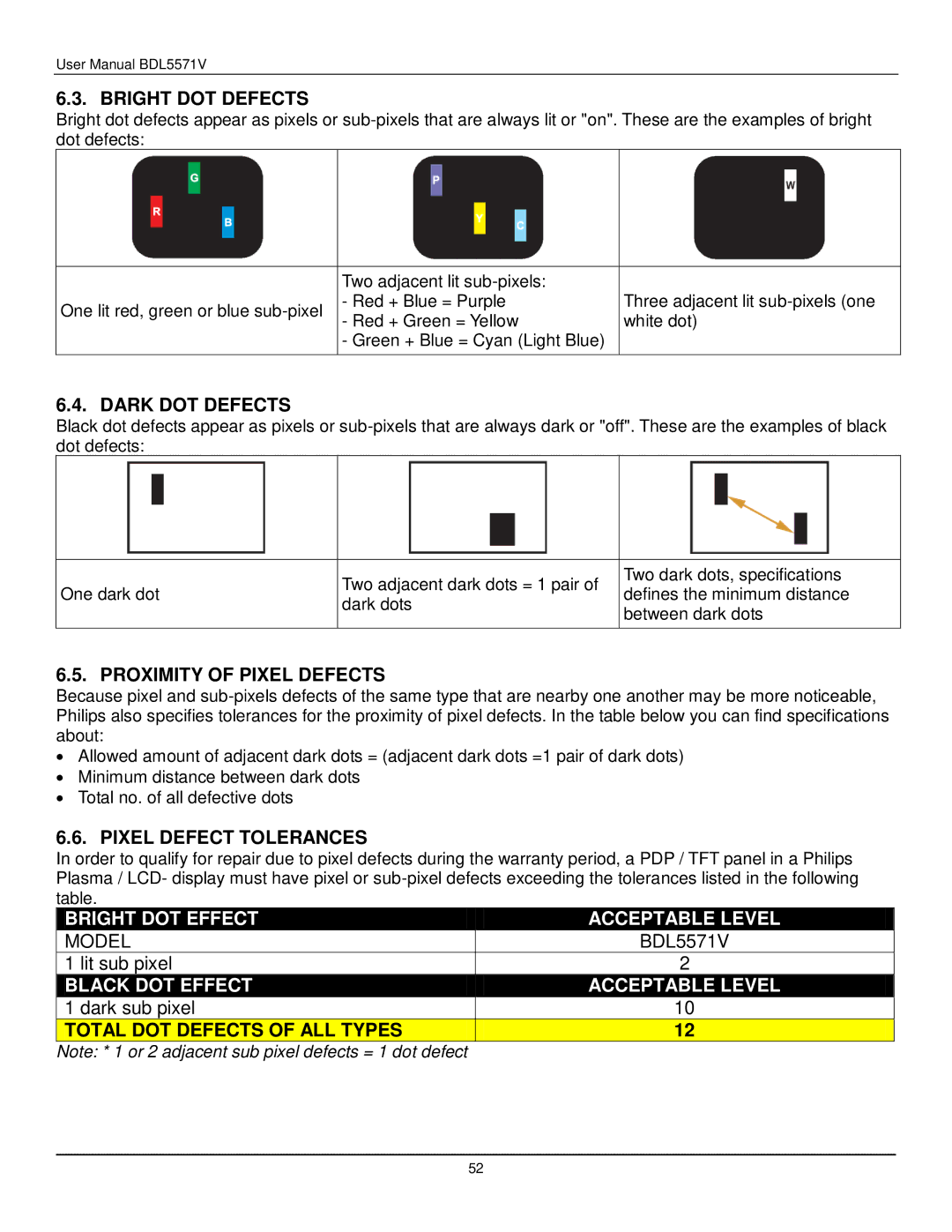
User Manual BDL5571V
6.3. BRIGHT DOT DEFECTS
Bright dot defects appear as pixels or
One lit red, green or blue
Two adjacent lit
-Red + Blue = Purple
-Red + Green = Yellow
-Green + Blue = Cyan (Light Blue)
Three adjacent lit
6.4. DARK DOT DEFECTS
Black dot defects appear as pixels or
One dark dot
Two adjacent dark dots = 1 pair of dark dots
Two dark dots, specifications defines the minimum distance between dark dots
6.5. PROXIMITY OF PIXEL DEFECTS
Because pixel and
∙Allowed amount of adjacent dark dots = (adjacent dark dots =1 pair of dark dots)
∙Minimum distance between dark dots
∙Total no. of all defective dots
6.6. PIXEL DEFECT TOLERANCES
In order to qualify for repair due to pixel defects during the warranty period, a PDP / TFT panel in a Philips Plasma / LCD- display must have pixel or
| BRIGHT DOT EFFECT |
|
| ACCEPTABLE LEVEL |
|
|
|
|
| ||
| MODEL |
|
| BDL5571V |
|
| 1 lit sub pixel |
| 2 |
| |
| BLACK DOT EFFECT |
|
| ACCEPTABLE LEVEL |
|
| 1 dark sub pixel |
| 10 |
| |
| TOTAL DOT DEFECTS OF ALL TYPES |
|
| 12 |
|
Note: * 1 or 2 adjacent sub pixel defects = 1 dot defect
52
